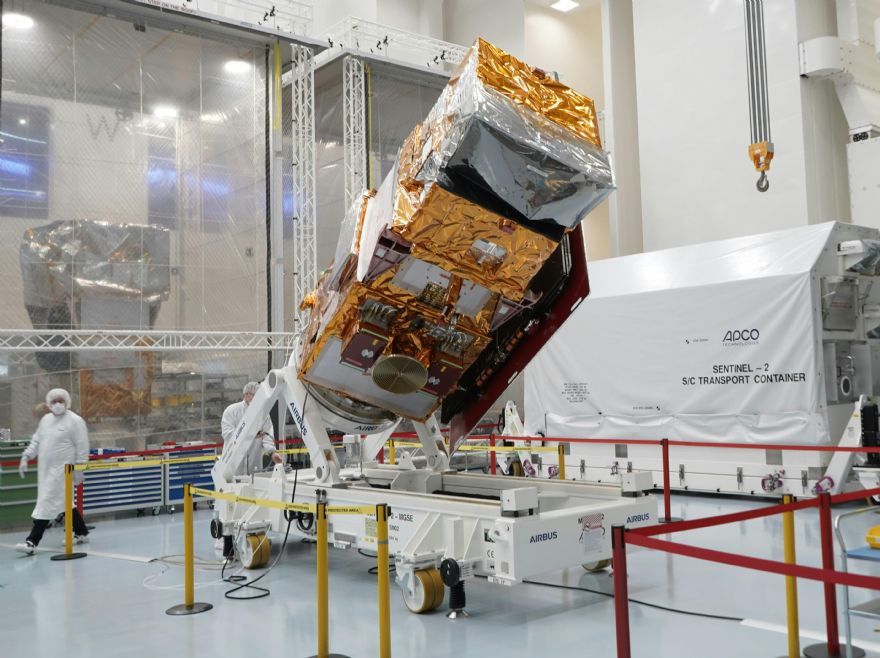
The third Copernicus Sentinel-2 satellite has been successfully launched on a Vega rocket from Kourou, French Guiana. The
www.airbus.com Airbus-built Sentinel-2C satellite will enter service in low-Earth orbit at 780km following initial testing and commissioning. Then, it will replace Sentinel-2A, which will retire and operate in tandem with Sentinel-2B.
Marc Steckling, head of Earth Observation, Science and Exploration at Airbus, said: “This launch gives the world another important sensor to monitor our changing planet and provides crucial continuity since the first Sentinel-2 satellite launch in 2015. Equipped with a high-resolution multispectral imager the satellite will collect vital imagery for a myriad of applications from agriculture to water quality monitoring.”
The Sentinel-2-mission is based on a constellation of two identical satellites, flying in the same orbit but 180deg apart for optimal coverage and revisit time. The satellites orbit the Earth every 100min covering all Earth’s land surfaces, large islands, inland and coastal waters every five days.
Offering ‘colour vision’ for the Copernicus programme, Sentinel-2C – like its precursor satellites Sentinel-2A and -2B – will deliver optical images from the visible to short-wave infrared range of the electromagnetic spectrum. The 1.1-ton satellite will enable continuation of imaging in 13 spectral bands with a resolution (per pixel) of 10, 20 or 60m and a uniquely large swathe width of 290km.
Sentinel-2 satellite data are used for monitoring land use and changes, soil sealing, land management, agriculture, forestry, natural disasters (floods, forest fires, landslides and erosion) and to assist humanitarian aid missions. Environmental observation in coastal areas likewise forms part of these activities, as does glacier, ice and snow monitoring.
Each Sentinel-2 satellite collects 1.5 terabytes of data per day, after on-board compression. The data is formatted at high speed and temporarily stored on board in the highest capacity Mass Memory and Formatting unit currently flying in space. Data recording and laser-enabled downlink can take place simultaneously at high speed via the EDRS SpaceDataHighway, in addition to the direct X-band link to the ground stations.
The Sentinel satellites are part of Copernicus, the Earth Observation component of the EU Space Programme, managed by the European Commission (EC) in partnership with the
www.esa.int European Space Agency (ESA). The Copernicus Sentinels provide remote sensing data of the Earth, providing key operational services related to the environment and security.
The launch was on the final Vega rocket operated by
www.arianespace.com Arianespace, before the shift to the new Vega C version.